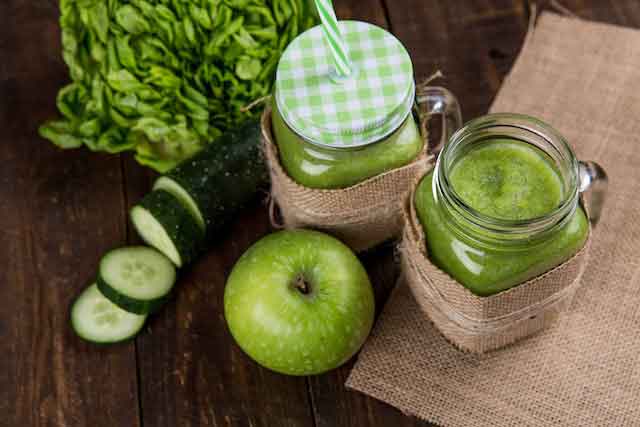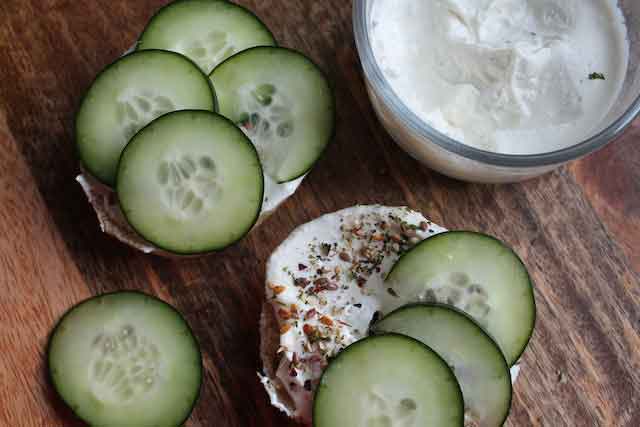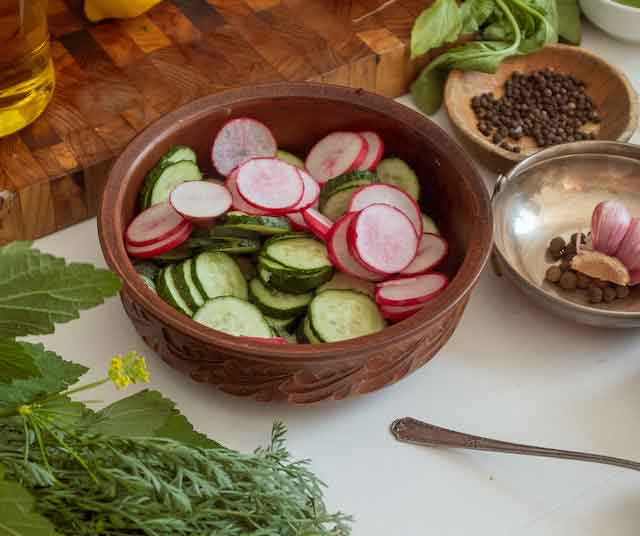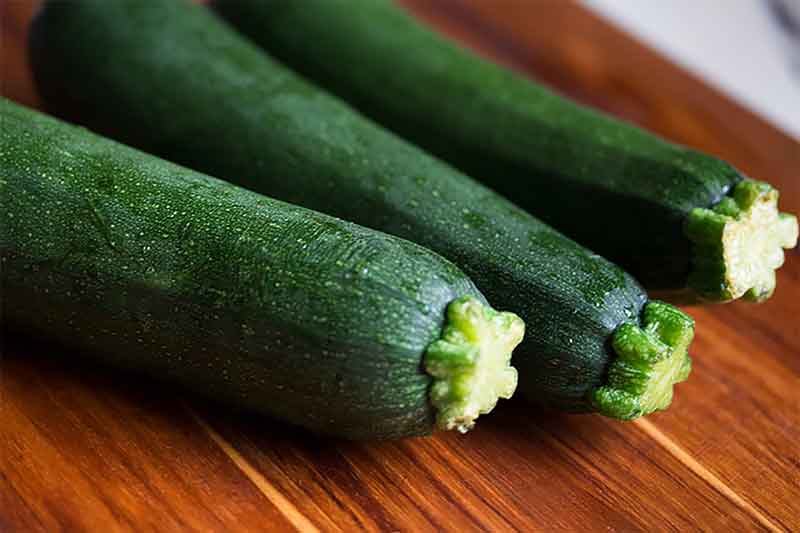Growing Missouri Cucumbers: From Seed to Harvest and Beyond
Cucumbers are a refreshing and nutritious addition to any garden, offering a crisp, cool crunch to salads, sandwiches, and more. Growing cucumbers can be a rewarding endeavor for both novice and experienced gardeners alike. In this comprehensive guide, we’ll explore the basics of growing cucumbers, offer a step-by-step guide to cultivating these versatile veggies, and delve into their health benefits and culinary uses. 🥒

The Basics of Growing Cucumbers: A Comprehensive Guide for Garden Enthusiasts
Cucumbers, the crisp and refreshing stars of the vegetable world, are a favorite among gardeners for their versatility, flavor, and numerous health benefits. With just a bit of know-how and some tender loving care, you can cultivate a thriving cucumber patch in your backyard garden. So, let’s dive into the basics of growing cucumbers and get you on your way to a bumper harvest!
Selecting the Perfect Cucumber Variety
Cucumbers come in a range of shapes, sizes, and flavors. Before planting, it’s essential to choose the right variety for your garden and culinary needs. Two main types of cucumbers dominate the market: slicing cucumbers and pickling cucumbers. Slicing cucumbers are larger and typically eaten fresh, while pickling cucumbers are smaller and ideal for—you guessed it—pickling! Some popular cucumber varieties include:
- Straight Eight: A classic slicing cucumber with a mild, sweet flavor
- Marketmore 76: A disease-resistant slicing cucumber perfect for beginners
- Boston Pickling: A small, crisp pickling cucumber with a tender skin
- Lemon: A round, yellow cucumber with a unique citrusy flavor
- Armenian: A long, ribbed cucumber with a mild taste and thin skin
Location, Location, Location: Finding the Perfect Spot for Your Cukes
Cucumbers thrive in full sun, so choose a spot in your garden that receives at least 6-8 hours of sunlight per day. They also prefer well-draining soil with a pH between 6.0 and 7.0. Before planting, work in some compost or well-rotted manure to provide your cucumbers with the nutrients they need to flourish.
Planting Time: Getting Your Cucumbers Off to a Great Start
Timing is everything when it comes to planting cucumbers. These heat-loving plants are sensitive to cold, so wait until soil temperatures reach at least 60°F (16°C) before sowing seeds outdoors. This usually occurs a couple of weeks after the last expected frost in your area. Sow cucumber seeds directly into the soil about 1 inch (2.5 cm) deep and 18-36 inches (45-90 cm) apart, depending on the variety. Alternatively, you can start seeds indoors 3-4 weeks before the last frost and transplant seedlings outdoors when they have at least two sets of true leaves and the soil has warmed up.
TLC: Caring for Your Cucumber Plants
Cucumbers need consistent moisture to thrive, so water your plants regularly, providing 1-2 inches (2.5-5 cm) of water per week. Water at the base of the plant to avoid wetting the leaves, which can lead to disease. Mulching around your plants can help conserve moisture, suppress weeds, and regulate soil temperature.
A support structure, such as a trellis or cage, can promote vertical growth and improve air circulation. Regularly inspect your plants for signs of pests or disease, and address any issues promptly. By following these basic guidelines for growing cucumbers, you’ll be well on your way to a bountiful harvest and enjoying the fruits (or should we say, veggies) of your labor.

Step-by-Step Guide to Growing Cucumbers: From Seed to Harvest
Ready to embark on your cucumber-growing adventure? This comprehensive, step-by-step guide will walk you through the entire process, from sowing seeds to harvesting your very own crisp and delicious cucumbers. Let’s get started!
Step 1: Choose the Right Cucumber Variety
Select a cucumber variety that best suits your gardening space and culinary preferences. Remember, there are two main types of cucumbers: slicing and pickling. Research different varieties and their specific requirements to make an informed decision.
Step 2: Prepare Your Garden Bed
Choose a sunny spot in your garden that receives at least 6-8 hours of sunlight per day. Ensure the soil is well-draining, with a pH between 6.0 and 7.0. Enrich the soil with compost or well-rotted manure to provide your cucumbers with the necessary nutrients for healthy growth.
Step 3: Sow Seeds or Transplant Seedlings
If starting from seed, sow cucumber seeds directly into the garden bed about 1 inch (2.5 cm) deep and 18-36 inches (45-90 cm) apart, depending on the variety. Wait until soil temperatures reach at least 60°F (16°C) before planting, which typically occurs a couple of weeks after the last frost in your area. Alternatively, you can start seeds indoors 3-4 weeks before the last frost and transplant seedlings outdoors when they have at least two sets of true leaves and the soil has warmed up.
Step 4: Water Regularly
Cucumbers require consistent moisture, so water your plants regularly, providing 1-2 inches (2.5-5 cm) of water per week. Water at the base of the plant to avoid wetting the leaves, which can lead to disease.
Step 5: Mulch and Fertilize
Apply a layer of organic mulch, such as straw or shredded leaves, around your cucumber plants to help conserve moisture, suppress weeds, and regulate soil temperature. Fertilize your plants with a balanced vegetable fertilizer according to package instructions to ensure they receive the necesary nutrients for vigorous growth.
Step 6: Provide Support
Encourage vertical growth by installing a support structure, such as a trellis or cage, for your cucumber plants. This will improve air circulation, reduce the risk of disease, and make harvesting easier.
Step 7: Monitor for Pests and Diseases
Regularly inspect your cucumber plants for signs of pests or diseases, such as aphids, cucumber beetles, or powdery mildew. Implement integrated pest management strategies to adress any issues and maintain a healthy garden environment.
Step 8: Harvest Your Cucumbers
Cucumbers are typically ready to harvest 50-70 days after planting, depending on the variety. Harvest cucumbers when they reach their desired size and before they become overripe or turn yellow. Use a sharp knife or pruners to cut the cucumber from the vine, leaving a small stem attached.
By following this step-by-step guide to growing cucumbers, you’ll soon be enjoying the refreshing crunch of homegrown cucumbers in your salads, sandwiches, and pickling jars. Happy gardening!

Common Cucumber Pests and Diseases: Tips for Prevention and Control
Growing cucumbers can be a delightful and rewarding experience, but it’s not without its challenges. Like any other garden crop, cucumbers can fall victim to various pests and diseases. In this section, we’ll explore some of the most common cucumber pests and diseases, along with tips on how to prevent and control them, ensuring a healthy and thriving garden.
Aphids
These tiny, sap-sucking insects can cause distorted leaves, stunted growth, and even transmit viruses. They often leave behind a sticky residue called “honeydew,” which can lead to the growth of sooty mold.
Prevention and Control: Encourage beneficial insects, like ladybugs and lacewings, which prey on aphids. You can also use insecticidal soap or neem oil to control aphid populations. Remove and discard heavily infested plant parts to prevent the spread of aphids.
Cucumber Beetles
Cucumber beetles are small, yellow-and-black striped or spotted beetles that feed on cucumber leaves, flowers, and fruits. They can cause significant damage and transmit bacterial wilt, a disease that can devastate your cucumber plants.
Prevention and Control: Use floating row covers to protect young plants, and remove them when plants begin to flower to allow pollination. Trap crops, such as radishes, can be used to lure cucumber beetles away from your main crop. You can also use organic insecticides, like neem oil, to control cucumber beetles.
Powdery Mildew
Powdery mildew is a fungal disease that appears as a white, powdery substance on cucumber leaves. It can lead to stunted growth, reduced yields, and even plant death if left untreated.
Prevention and Control: Plant resistant varieties, ensure proper air circulation, and avoid overhead watering to prevent powdery mildew. If you notice signs of infection, treat your plants with a fungicide labeled for powdery mildew control or use a homemade solution of baking soda, water, and a few drops of dish soap.
Downy Mildew
Downy mildew is another fungal disease that affects cucumbers, causing yellow spots on the upper surface of leaves and a fuzzy, grayish-white growth on the underside. It can lead to defoliation and reduced yields.
Prevention and Control: Plant resistant varieties, maintain proper air circulation, and practice crop rotation to minimize the risk of downy mildew. Remove and discard infected leaves to prevent the spread of the disease. Fungicides specifically labeled for downy mildew control can also be used to treat infected plants.
Bacterial Wilt
Bacterial wilt is a devastating disease that causes cucumber plants to wilt suddenly and die. It is transmitted by cucumber beetles, which spread the bacteria as they feed on plant tissue.
Prevention and Control: Control cucumber beetles, as mentioned earlier, to reduce the risk of bacterial wilt. Remove and destroy any infected plants to prevent the spread of the disease. Practice crop rotation to reduce the presence of the bacteria in the soil.
By staying vigilant and implementing preventative measures, you can minimize the impact of pests and diseases on your cucumber plants. Keep your garden healthy and happy, and you’ll be well on your way to a bountiful cucumber harvest!

Vertical Gardening: A Space-Saving Approach to Growing Cucumbers
Whether you’re working with a small backyard or a modest balcony, vertical gardening is a fantastic way to make the most of your available space while growing fresh and delicious cucumbers. In this section, we’ll explore the benefits of vertical gardening and offer some practical tips to help you implement this space-saving approach in your own garden.
Benefits of Vertical Gardening
- Maximizes Space: By growing plants upward rather than outward, vertical gardening allows you to cultivate more plants in a limited area. It’s a game-changer for urban gardeners or anyone with limited gardening space.
- Improves Air Circulation: Vertical gardening promotes better air circulation around plants, reducing the risk of diseases caused by excess moisture and humidity.
- Easier Maintenance: When plants are grown vertically, tasks like watering, pruning, and harvesting become more accessible and less strenuous.
- Enhances Visual Appeal: A vertical garden can be both functional and visually stunning, adding an eye-catching element to your outdoor space or balcony.
Tips for Growing Cucumbers Vertically
- Choose the Right Support: Select a sturdy support structure for your cucumber plants, such as a trellis, cage, or even a repurposed ladder. Make sure the support is strong enough to bear the weight of the plants and their fruits.
- Plant the Right Varieties: While most cucumber varieties can be trained to grow vertically, vining types are particularly well-suited for this purpose. Bush varieties may require some additional support or modified vertical structures.
- Train Your Plants: As your cucumber plants begin to grow, gently guide the vines onto the support structure and secure them with soft ties if necessary. Encourage the plants to climb upwards by directing the growth towards the support.
- Prune Regularly: Regularly prune your cucumber plants to maintain a manageable size and shape. Focus on removing dead or diseased leaves, as well as any lateral shoots that may compete with the main vine for nutrients and energy.
- Monitor for Pests and Diseases: Closely inspect your vertical garden for signs of pests or diseases, as early detection and intervention are crucial for maintaining healthy plants. Vertical gardening can help reduce the risk of some issues, but it’s essential to remain vigilant.
By incorporating vertical gardening techniques into your cucumber-growing strategy, you can enjoy a bountiful harvest even in the smallest of spaces. Give it a try and experience the satisfaction of growing your own cucumbers, no matter the size of your garden!🥒
The Health Benefits of Cucumbers: More Than Just a Crunchy Delight
Cucumbers may be known for their satisfying crunch and refreshing taste, but did you know they also pack a nutritional punch? In this section, we’ll dive into the numerous health benefits of cucumbers and discover why they deserve a prominent spot on your plate.
1. Hydration Hero
Cucumbers are composed of about 95% water, making them an excellent choice for staying hydrated. Proper hydration is crucial for maintaining healthy body functions, promoting healthy skin, and preventing fatigue.
2. Low in Calories
With a mere 15 calories per 100 grams, cucumbers are an ideal snack for those watching their calorie intake. They can be enjoyed guilt-free and are a perfect addition to salads, sandwiches, or even as a crunchy alternative to chips.
3. Rich in Antioxidants
Cucumbers contain various antioxidants, including vitamin C, beta-carotene, and flavonoids. These compounds help combat free radicals in the body, protecting your cells from damage and reducing the risk of chronic diseases, such as heart disease and certain types of cancer.
4. Supports Digestive Health
Cucumbers are a good source of dietary fiber, particularly in their skin. Fiber aids in digestion by adding bulk to your stool, promoting regular bowel movements, and reducing constipation.
5. Heart-Healthy Nutrients
Cucumbers are an excellent source of potassium, a mineral that plays a vital role in regulating blood pressure and maintaining proper heart function. A diet rich in potassium can help lower the risk of heart disease and stroke.
6. Promotes Bone Health
Cucumbers contain a fair amount of vitamin K, which is essential for proper blood clotting and bone health. Adequate vitamin K intake can help improve bone density and reduce the risk of fractures.
7. Skin-Soothing Properties
Thanks to their high water content and soothing compounds, cucumbers have long been used to alleviate skin irritations and reduce swelling. Placing cool cucumber slices on your eyes can help reduce puffiness and provide relief from sunburn or irritation.
8. Supports Weight Loss
Cucumbers can be a helpful addition to a weight loss plan, as their high water and fiber content can help you feel fuller for longer. By incorporating cucumbers into your meals or snacks, you’ll be more likely to stick to a calorie-controlled diet without feeling deprived.
By integrating cucumbers into your diet, you’ll not only enjoy their refreshing taste and satisfying crunch but also reap the numerous health benefits they offer. So go ahead, slice up some cucumbers and savor the benefits of this versatile and nutritious veggie!
Delicious Cucumber Recipes
Cucumbers are a versatile ingredient that can be enjoyed in a variety of dishes. Some popular cucumber recipes include:
- Cucumber salad with dill and red onion
- Chilled cucumber soup
- Greek tzatziki sauce
- Cucumber and avocado sushi rolls
- Quick refrigerator pickles
Cucumbers Around the World
Cucumbers have long been a staple in many global cuisines, from Greek salads and Indian raita to Japanese sunomono and Middle Eastern fattoush. Exploring cucumber-based dishes from different cultures can provide fresh inspiration and unique flavor combinations for your culinary adventures.
The Future of Cucumber Cultivation
As urban gardening and sustainable agriculture practices continue to gain traction, innovative cultivation techniques and disease-resistant cucumber varieties will likely become more prevalent. Vertical gardening, hydroponics, and container gardening are just a few examples of space-saving and resource-efficient methods that can help make growing cucumbers more accessible for a wider range of gardeners.
Additionally, plant breeders are continuously working to develop new cucumber varieties that offer improved disease resistance, higher yields, and unique characteristics. These advancements in cucumber cultivation will undoubtedly contribute to the future success and popularity of this versatile and refreshing vegetable.
Growing cucumbers can be a rewarding and enjoyable experience, providing you with a delicious and healthy addition to your garden and kitchen. By understanding the basics of cucumber cultivation, following a step-by-step guide, and exploring the many health benefits and culinary uses of cucumbers, you can reap the rewards of your hard work and savor the crisp, cool crunch of homegrown cucumbers. 🏡
FAQs
Q: When is the best time to plant cucumbers?
- A: Cucumbers should be planted when soil temperatures reach at least 60°F (16°C), typically after the last frost date in your area.
Q: How much space do cucumber plants need?
- A: Cucumber plants should be spaced 18-36 inches (45-90 cm) apart, depending on the variety, to ensure ample room for growth.
Q: How often should I water my cucumber plants?
- A: Cucumbers require consistent moisture, so water your plants regularly, providing 1-2 inches (2.5-5 cm) of water per week.
Q: How can I protect my cucumber plants from pests and diseases?
- A: Maintain a healthy garden environment through proper watering, pruning, and crop rotation, and implement integrated pest management strategies to minimize pest and disease issues.
Q: Can I grow cucumbers in a small space?
- A: Yes, cucumbers can be grown in small spaces using vertical gardening techniques, such as trellising or using cages to promote upward growth.
Q: Are cucumbers good for my health?
- A: Cucumbers are low in calories and high in essential nutrients, such as vitamins K, C, and A, as well as potassium and magnesium, making them a healthy addition to your diet.
Q: What are some popular cucumber dishes?
- A: Cucumber dishes include cucumber salad, chilled cucumber soup, Greek tzatziki sauce, cucumber and avocado sushi rolls, and refrigerator pickles.
Q: What are some interesting cucumber varieties to try growing?
- A: Specialty cucumber varieties, such as lemon cucumbers and Armenian cucumbers, offer unique shapes, flavors, and textures that can add variety and interest to your garden and plate.








